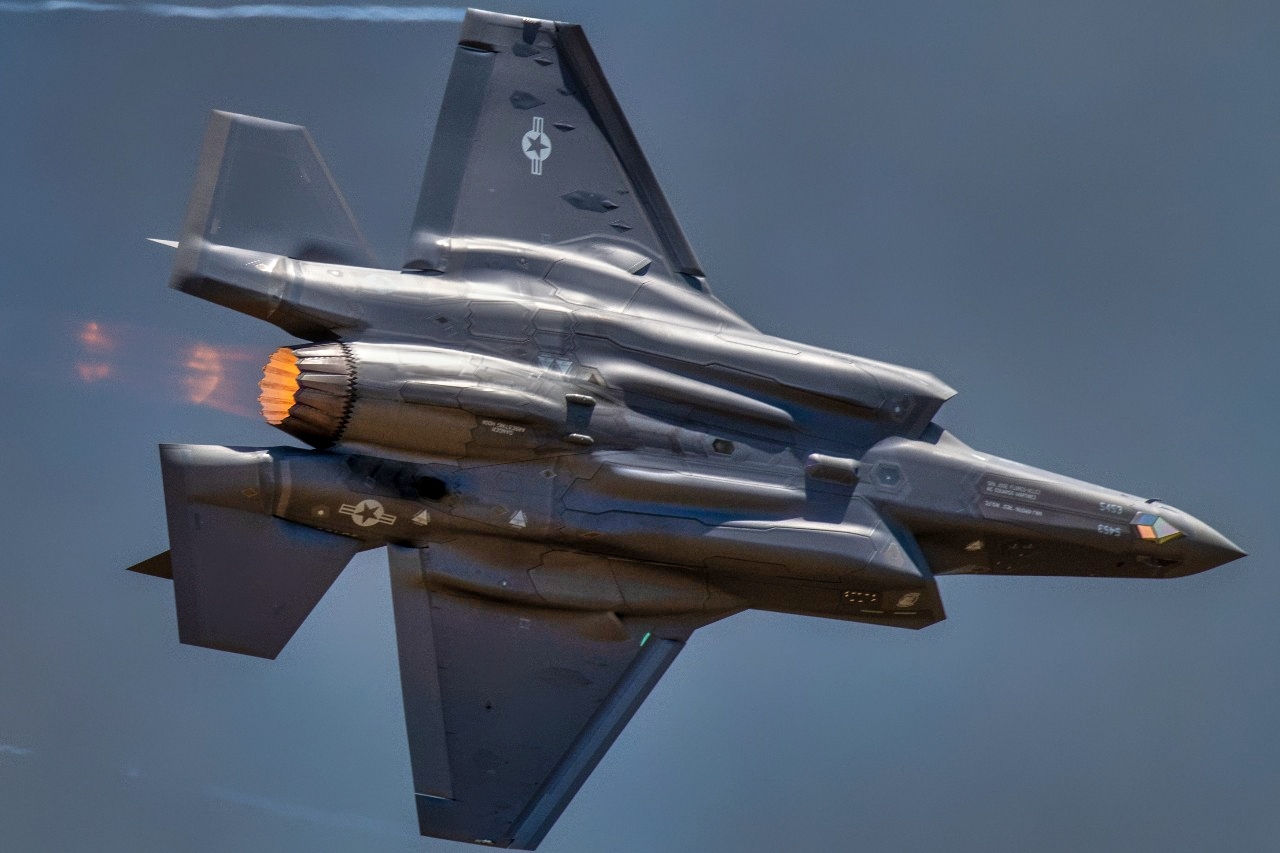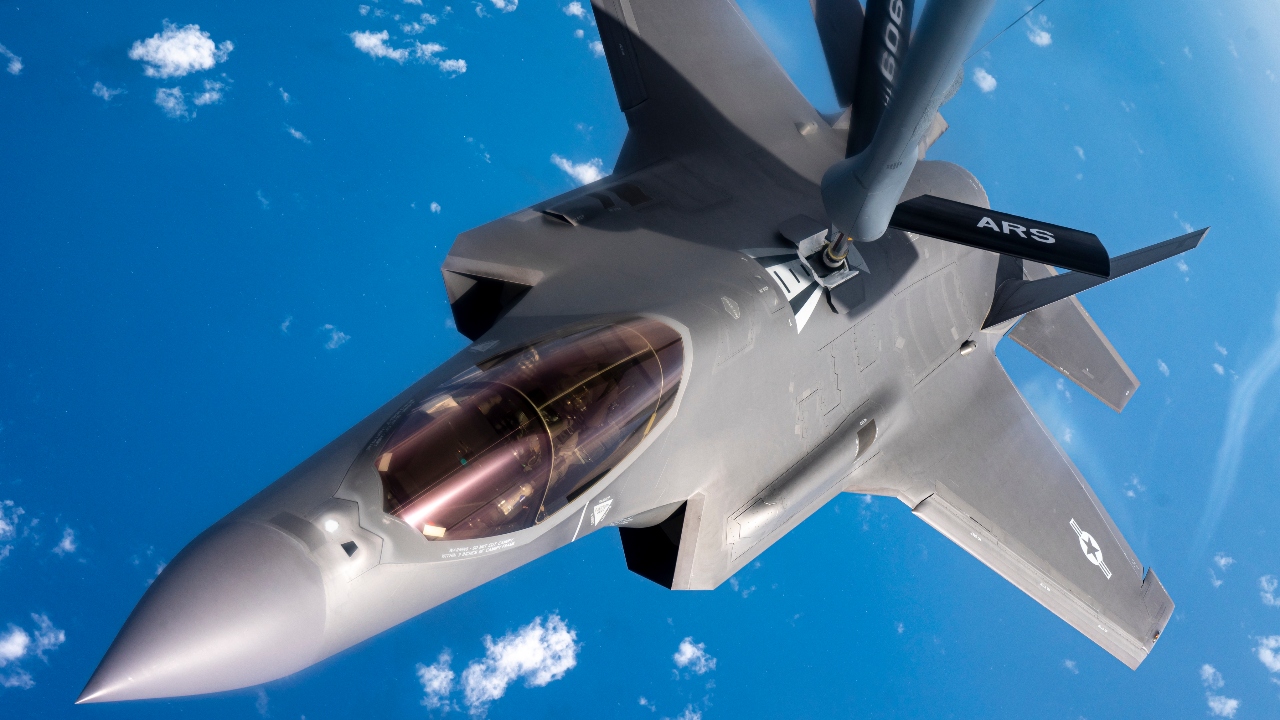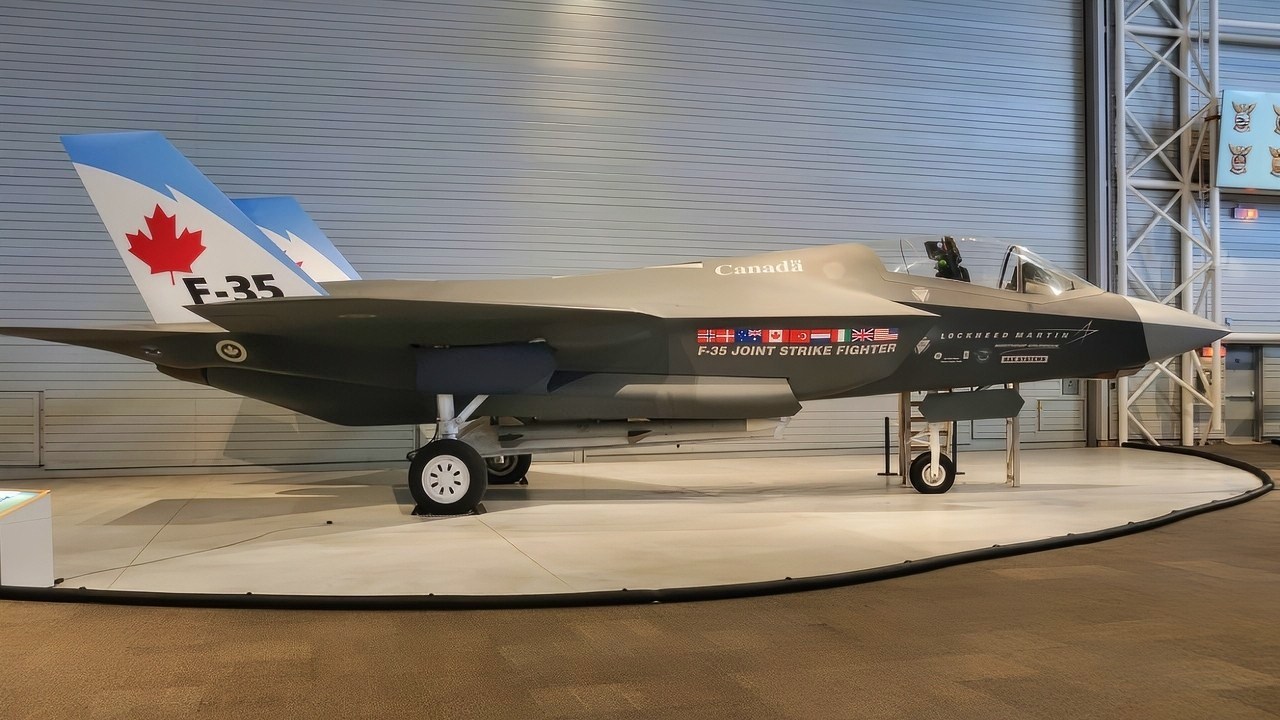Key Points and Summary – Canada’s long-running F-35 debate is reaching a decision point.
-Ottawa has contracted 16 of 88 planned F-35As, with costs rising toward $28 billion including infrastructure, training and sustainment, leaving space to cancel the remainder.

U.S. Air Force Maj. Kristen “Beo” Wolfe, F-35A Lightning II Demonstration Team Commander with the 388th Fighter Wing, flies over the crowd during the Warriors Over the Wasatch Air and Space Show on June 25, 2022 at Hill Air Force Base, Utah. (U.S. Air Force photo by Senior Airman Erica Webster)

A U.S. Air Force F-35A Lightning II pilot assigned to the 421st Fisgter Squadron, Hill Air Force Base, Utah, receives fuel from a U.S. Air Force KC-135 Stratotanker aircraft assigned to the 506th Expeditionary Air Refueling Squadron, Andersen Air Force Base, Guam, over the Pacific Ocean, while conducting Agile Combat Employment (ACE) rehearsals, June 28, 2022. ACE shifts operations from centralized physical infrastructures to a network of smaller, dispersed locations that can complicate adversary planning and provide more options for joint force commanders. (U.S. Air Force photo by Master Sgt. Nicholas Priest)
-Critics cite price, U.S. control over software and spares, and sovereignty concerns.
-The military argues the jet’s stealth, sensor fusion and NORAD interoperability are essential for Arctic defense and allied operations.
-European 4.5-gen options—Gripen, Rafale, Typhoon—are cheaper or cold-weather friendly but lack stealth and deep NATO integration.
-Alternatives include a mixed fleet, but complexity grows. Industrial stakes are high: Canadian firms hold $3B in F-35 contracts.
Canada’s F-35 Dilemma: Cancel or Commit?
The F-35 has always been a touchy subject for the Canadians. Ever since the possibility of acquiring the fighter jets was first floated in 2010, the idea was ridiculed by the public and the government alike.
Now, Canada will soon have to make an official decision on whether it wants to acquire the American stealth fighter.
But is the F-35 really the best option for Canada, or should we consider other alternatives?
Why Canada is Skeptical of the F-35
Canada initially committed to purchasing 88 F-35A jets from Lockheed Martin, with the first deliveries expected in 2026.
The deal was initially valued at around $19 billion but has since increased to nearly $28 billion, accounting for infrastructure, training, and long-term sustainment costs.
As of now, only 16 aircraft are legally contracted, meaning the remaining 72 could still be canceled without breaching existing agreements. This leaves Canada with a window of opportunity to reconsider its options.

The Saab JAS 39E Gripen is Sweden’s modern multi-role fighter, built specifically for versatility and resilience against Russian threats. Image Credit: Creative Commons.
There are several reasons why Canada might consider canceling the deal.
The most prominent is the escalating cost.
The F-35 program has proven to be more expensive than anticipated, not just in terms of acquisition but also in terms of long-term maintenance and infrastructure upgrades. Additionally, political tensions between Canada and the United States, particularly during the Trump administration, have raised concerns about sovereignty and operational independence.
Canada has expressed unease about the level of U.S. control over the F-35’s software and spare parts, which could limit its ability to operate the jets autonomously.
What Happens if Canada Drops the F-35?
While the government has been skeptical of the F-35, the military remains in favor of the fighter jet due to the capabilities it offers.
The F-35 is a fifth-generation stealth fighter with advanced sensor fusion, electronic warfare capabilities, and network-centric warfare integration.
These features allow it to operate undetected in contested environments, share real-time data with allied forces, and dominate in both air-to-air and air-to-ground missions.
This level of capability is especially critical for Canada’s Arctic sovereignty missions and its role in NORAD, where stealth and long-range surveillance are essential.
Alternative jets such as the Saab Gripen, Dassault Rafale, or Eurofighter Typhoon are considered 4.5-generation fighters.
While they are capable platforms, they lack the stealth and deep integration with NATO systems that the F-35 offers.
For instance, the Gripen is designed for cold climates and offers lower operating costs.
Still, it does not match the F-35 in terms of sensor fusion or survivability in high-threat environments.
The Rafale and Typhoon are powerful twin-engine fighters with strong performance records, but they also fall short in stealth and interoperability with U.S. systems.
Why the F-35 is Still a Good Fit for Canada
The F-35 is necessary for maintaining treaty obligations with the United States. Canada’s defense strategy is heavily reliant on seamless cooperation with U.S. forces, particularly under the NORAD agreement.
Most NATO allies use the F-35, and it is becoming the standard for joint operations. Choosing a different jet would complicate mission planning, data sharing, and logistics.
The U.S. has already expressed concern that Canada’s withdrawal from the F-35 program could threaten NORAD’s effectiveness.
If Canadian and American pilots are flying different aircraft with incompatible systems, the alliance’s ability to respond to threats in a coordinated manner could be compromised.
Canada’s Arctic defense posture would also be affected. The F-35’s stealth and long-range sensors make it ideal for patrolling vast, remote regions.
While the Gripen is well-suited for cold-weather operations, it lacks the same surveillance and deterrence capabilities. This could weaken Canada’s ability to assert sovereignty in the increasingly contested Arctic region, where Russian and Chinese military activity is on the rise.
From an industrial perspective, Canada has already received over $3 billion in contracts related to the F-35 program.
Canceling the deal could jeopardize these economic benefits and exclude Canadian firms from future opportunities in the global F-35 supply chain.
While alternative jets might offer domestic assembly or technology transfer, these benefits are not guaranteed and would depend on complex negotiations.
Are There Any Other Options?
One possible compromise would be a mixed fleet approach, where Canada retains the 16 F-35s already contracted and supplements them with European jets.
This would diversify supply chains and reduce dependence on the U.S., but it would also introduce logistical complexity and increase training and maintenance costs. Operating multiple aircraft types requires separate infrastructure, spare parts, and pilot training programs, which could offset any savings from canceling the F-35 deal.
Given the political climate in Canada, no decision is likely to make everyone happy.
While public support for cancellation is growing due to cost concerns and sovereignty issues, the military strongly favors retaining the F-35 for its advanced capabilities and strategic alignment.
The debate reflects broader tensions between economic pragmatism, national autonomy, and international obligations.
It is also important to note that Canada is in desperate need of a new fighter jet to bolster its aging fleet.
While its CF-18s have been sufficient for many years, these fighters are starting to show their age, and the longer Canada keeps them in service, the more costly they will become to maintain.
Whether it is the F-35, the Saab Gripen, or any other fighter, Canada needs to make a decision quickly, lest it make a terrible strategic decision.
About the Author: Isaac Seitz
Isaac Seitz, a Defense Columnist, graduated from Patrick Henry College’s Strategic Intelligence and National Security program. He has also studied Russian at Middlebury Language Schools and has worked as an intelligence Analyst in the private sector.
More Military
The U.S. Navy’s Great Ford-Class Aircraft Carrier Reboot Has Arrived
The U.S. Navy’s Great Iowa-Class Battleship Reboot
Is the Ukraine War ‘Shapeshifting’ Into the Vietnam War?
China’s Great J-20 Mighty Dragon Stealth Fighter Reboot Has Arrived










